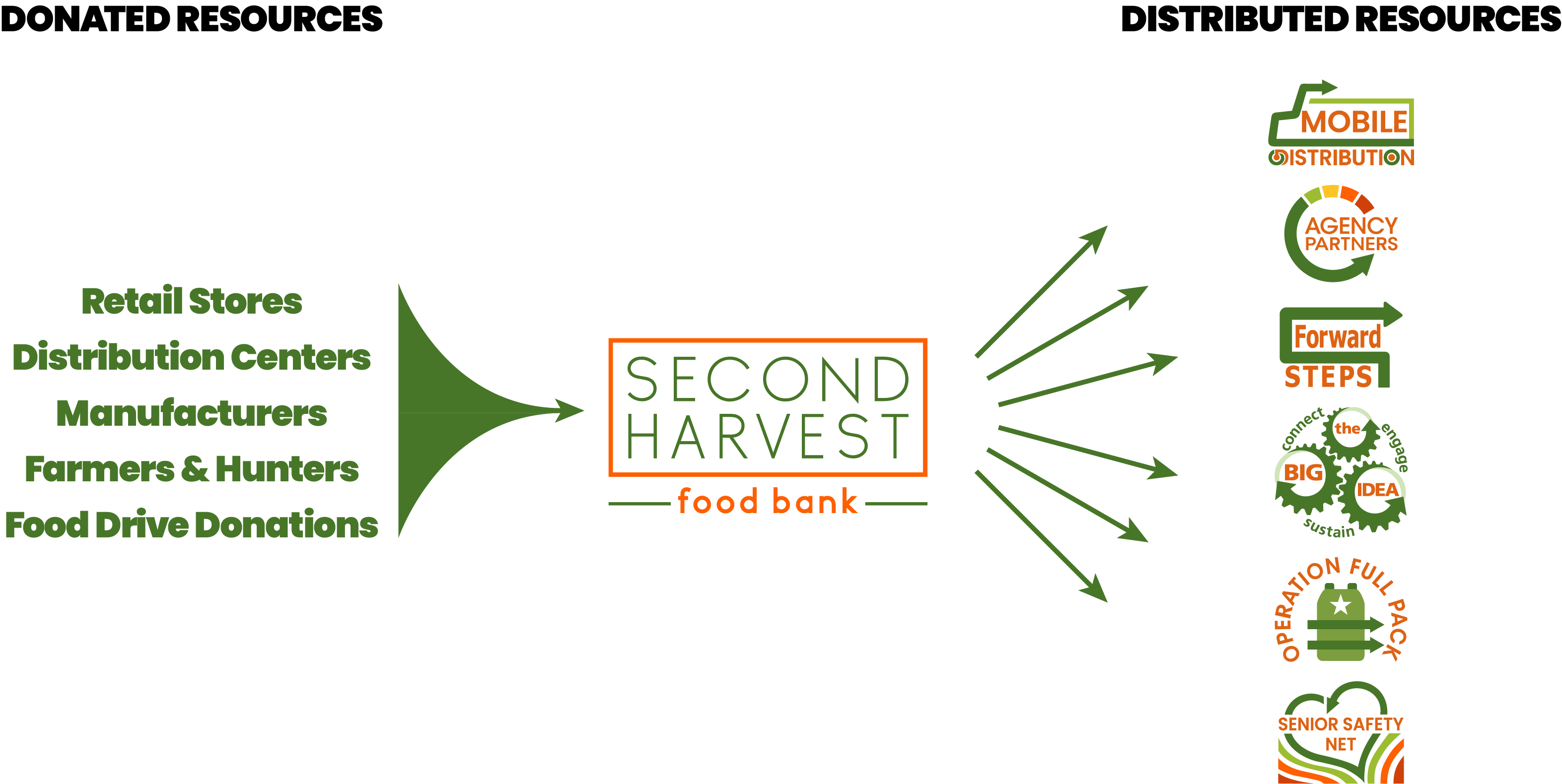
Second Harvest Food Bank of East Central Indiana was founded in 1983 with the goal of leveraging resources in the community to combat rising rates of food insecurity. Second Harvest is, and always has been a community effort. Funded by local philanthropists and powered volunteers, we have become the region’s largest hunger relief organization. More than 200 partners work shoulder-to-shoulder with us toward our vision of seeing people in East Central Indiana free from hunger and self-sufficient.
Counties Served
8
PEOPLE SERVED
57,530+
ANNUAL VOLUNTEERS
4,000+
MEALS MADE POSSIBLE IN 2022
7,016,000+
Our Initiatives
Our mission is to provide help for today by feeding the hungry and hope for tomorrow by addressing the causes of food insecurity while empowering people toward self-sufficiency.
Our vision is to see people in East Central Indiana free from hunger and self-sufficient.
Our Values
- Dignity and compassion for all
- Striving for excellence in every effort and interaction
- Devotion to community and belief in human potential
- Responsible governance and fiscal stewardship
- Relationship-focused
Our Beliefs
- We seek partners who share our values and mission
- We can put a dent in poverty in all its forms
- We must address the root causes of food insecurity
- We will empower people toward long-term stability
- Donor and volunteer engagement must be intentional and meaningful
- We must advocate for those with no voice
- To change our communities we must be open to change

Second Harvest is a proud partner food bank of Feeding America, the largest domestic hunger-relief organization in the United States. Being a partner food bank of Feeding America allows us to access donated product, professional resources, and a network of other like-minded organizations across the country. Feeding America is a nationwide network of 200 food banks and 60,000 food pantries and meal programs that provides food and services to more than 46 million people each year.
WHERE OUR FOOD COMES FROM
We stock our warehouse with food from five major sources: retail stores, distribution centers, manufacturers, farmers and hunters, and food drive donations.
Each of these are vital in their own right. Accepting food from large retailers and manufacturers prevents it from going to waste, as is the fate of way too much perfectly good food. Once it’s in our hands, we’re able to distribute it throughout the community via our array of initiatives. Each initiative focuses on a different part of the community, allowing us to take donations on a large scale while ensuring no neighbor gets left behind.


